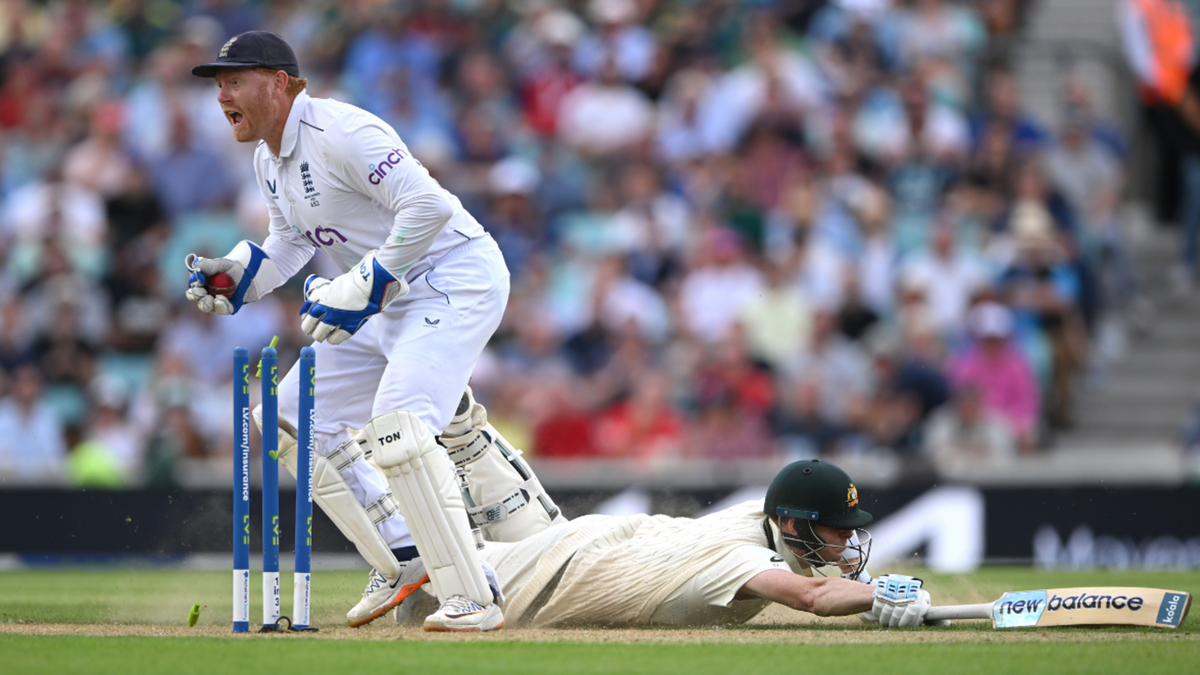
The contentious non-run out of Steve Smith on day two of the final Ashes Test has sparked plenty of debate, with part of the conversation focussing on whether Zing bails would have made a difference to the outcome.
You can bet on the 2023 Ashes with our Match Centre partners, bet365.

Speaking after play, Stuart Broad said that one of the onfield umpires told him it could have: “Kumar [Dharmasena] said to me if it was zing bails it would been given out, I don’t really understand the reasoning why.”
However, this does not mean a mistake was made in the Smith run out (though some three-angle dissection from Sky suggests there may have been). What constitutes the wicket being broken differs when Zing bails are in use and when they aren’t.
According to the Laws of Cricket, “The wicket is broken when at least one bail is completely removed from the top of the stumps.” This was the key consideration in the Smith decision, with one spigot of the left bail possibly still in place as he made his ground.
The ICC playing conditions make clear that a different moment is to be considered when Zing bails are used. “Where LED Wickets are used the moment at which the wicket has been broken shall be deemed to be the first frame in which the LED lights are illuminated and subsequent frames show the bail permanently removed from the top of the stumps.”
Therefore, if a batter is out of their ground when the ball or a wicketkeeper’s arm or glove makes contact with the wicket, but in their ground by the time a bail is fully removed, it is likely that, with Zing bails in operation, they would be run out, and with standard bails in operation, they would be in, and both decisions would be correct.
However, while Dharmasena feels this would have done for Smith, there was more at play in the decision. Wicketkeeper Jonny Bairstow began breaking the wicket before collecting the ball, before, seemingly, completely doing so when the ball was in his gloves. Had Zing bails been in use, it is likely the left bail would have lit up before he gloved the ball, meaning the wicket would not have been broken fairly.
While the right bail was still fully in place when Bairstow collected the ball, it is again unclear whether this was dislodged before or after Smith made his ground.
Zing bails generally only see use in limited-overs games and day/night Test matches.








